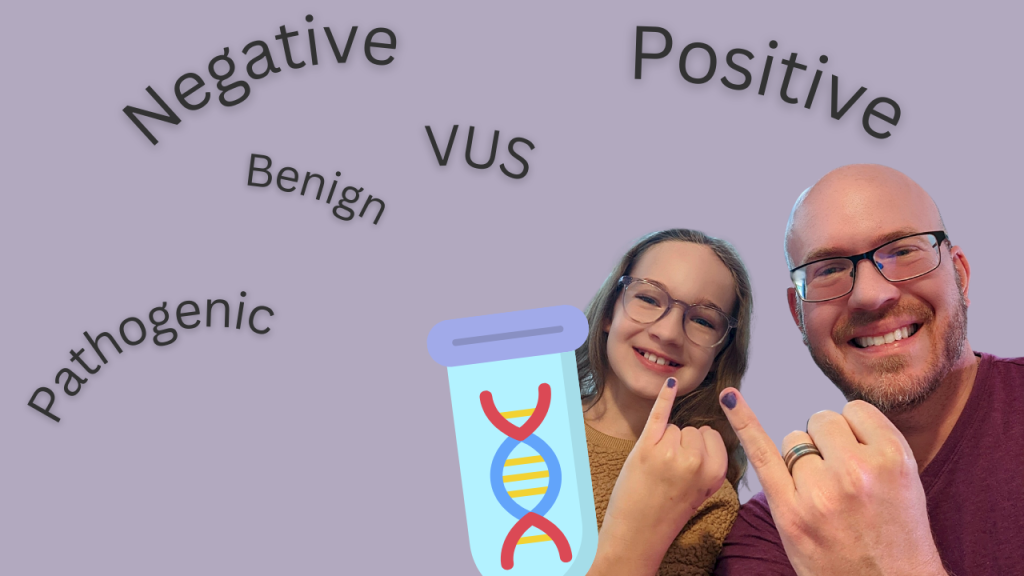
By Ryan Rodarmer, MS
Genetic Counselor
- A “negative” genetic test may not completely rule out an underlying genetic cause for aortic aneurysm/dissection. Therefore, it may be better to consider the test “uninformative.”
- Genetic testing of additional family members following an uninformative test is usually not helpful; however, family members may still be at increased risk for aortic aneurysm and dissection and family member surveillance via echocardiogram or other means should be discussed with their providers.
- Those with aortic aneurysm/dissection at a young age (under 60), multiple aneurysms, traits that would suggest an underlying genetic syndrome, or a positive family history may consider genetic research following an uninformative genetic test. They may also wish to periodically ask their provider about updates in genetic testing as there are frequent improvements in genetic testing knowledge and technology.
While pursuing a graduate degree in genetic counseling, I was incidentally diagnosed with an enlarged aortic root during hospitalization for endocarditis (a heart infection). I was not aware of any family history of aortic aneurysm or dissection, but I assumed it was genetic, given my young age (25) and lack of other risk factors. Despite having potentially at-risk parents, siblings, and a young son, I did not immediately undergo genetic testing. At the time, the odds of finding a genetic variation responsible for my thoracic aortic disease (TAD) were quite low. There was no known family history, and I did not have any physical traits or related health concerns that would suggest an underlying genetic syndrome (such as Marfan syndrome or Loeys-Dietz).
Instead of undergoing genetic testing, I recommended that my close family members talk to their providers about undergoing periodic echocardiogram surveillance. I would have my son do the same when he got a bit older. Very few family members decided to screen, but of those that did, everything looked fine.
My cardiologist scheduled me for mitral valve (MV) repair in 2013 after fighting endocarditis for the second time and permanently losing some vision on the right (also due to my faulty MV). At that time, I decided to undergo genetic testing for a panel of genes known to cause familial/hereditary TAD. Genetic testing had improved, as a handful of genes had been discovered that may be responsible for my “non-syndromic” TAD. If testing identified a genetic cause, my doctors would consider preventive open-heart aorta and MV repair instead of Da Vinci robotic repair of only the mitral valve.
Genetic testing was “negative,” meaning they did not find a disease-causing genetic variation, also known as a “pathogenic variant.” However, this result did not entirely rule out a genetic cause because there were likely additional genes or genetic mechanisms that researchers had yet to discover. For this reason, it is best to say that my genetic test was “uninformative” instead of “negative,” as a genetic cause was not only still possible but suspected.
After experiencing a type A aortic dissection at only 39 years of age and at an aortic size that would suggest a low dissection risk, I finally convinced additional family members of the likely genetic risk. They underwent a screening echocardiogram. Multiple family members also had a thoracic aortic aneurysm, and my father was able to have dissection-preventing surgery with an experienced surgeon.
My children will undergo routine surveillance moving forward, and I am involved in genetic research to find additional genes. One day, researchers will find the genetic cause for my aortic aneurysm and dissection. Then others in the family, including my children, can determine whether they are at increased risk for TAD by testing for the genetic variant I carry. In the meantime, family members with a first-degree relative (a parent, sibling, or child) with an aortic aneurysm or dissection are encouraged to consider periodic surveillance (via echocardiogram or other means as determined by their physicians).
The views, information, and opinions presented here are those of the individual(s) involved and do not represent the opinions of The Marfan Foundation. The Marfan Foundation is not responsible for and does not verify for accuracy any of the information contained here, nor does the information constitute medical or other professional advice or services. This website is not produced by or affiliated with The Marfan Foundation or The VEDS Movement.

